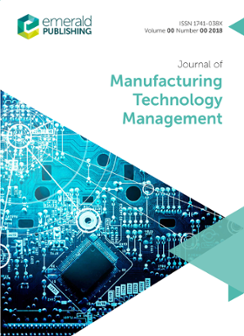增材制造技术与商业模式——系统文献综述
IF 7.3
2区 工程技术
Q1 ENGINEERING, INDUSTRIAL
引用次数: 11
摘要
目的本文综述了增材制造技术与商业模式交叉的研究进展。综述的目的是为了研究人员的利益,综合过去的研究,描述主要的研究主题和汇总的研究问题,并找出文献中的研究空白。设计/方法/方法对二次数据进行了系统的文献综述。该评论中的288篇出版物出现在同行评审的期刊文章、会议论文集和书籍章节中。本文按出版年份和出版来源列出了所有出版物。该综述还区分了实证研究和非实证研究,描述了方法论方法,并按分析单位和主题对出版物进行了分类。Findings对AMT和BM交叉点的研究在过去三年中显著增加,反映了企业和行业对数字制造过程的兴趣日益增长。这篇综述确定了文献中对该领域有重要见解的十二个主要主题。每个主题都确定了汇总的研究问题。介绍了研究进展和差距。四个主题与BM直接相关:(1)BM类型,(2)BM和技术,(3)BM设计和流程,以及(4)BM价值和供应链。原创性/价值这篇综述是第一篇关于AMT和BM交叉点的系统文献综述。因此,这篇综述为研究人员探索研究中的差距和在综合层面上提出研究问题提供了指导。该审查还支持这些技术的用户在所谓的数字革命中审查他们的商业实践和模式。本文章由计算机程序翻译,如有差异,请以英文原文为准。
Additive manufacturing technologies and business models – a systematic literature review
PurposeThis paper reviews research on the intersection between additive manufacturing technologies (AMTs) and business models (BM). The purpose of the review is to synthesize past research for the benefit of researchers, to describe the dominant research themes and aggregated research questions and to identify research gaps in the literature.Design/methodology/approachA systematic literature review of secondary data was conducted. The 288 publications in the review appeared in peer-reviewed journal articles, conference proceedings papers and book chapters. All publications are listed in this paper by publication year and publication source. The review also distinguishes between empirical and non-empirical studies, describes methodological approaches and categorizes the publications by unit of analysis and by theme.FindingsResearch on the intersection between AMT and BM, which has increased significantly in the last three years, reflects firms' and industries' growing interest in digital manufacturing processes. This review identifies twelve dominant themes in the literature that contribute important insights to the field. Aggregated research questions are identified in each theme. Research advances and gaps are presented. Four themes relate directly to BM: (1) BM types, (2) BM and technology, (3) BM design and processes and (4) BM value and supply chains.Originality/valueThis review is the first systematic literature review on the intersection between AMT and BM. As such, the review provides a guide for researchers as they explore gaps in the research and develop research questions on an aggregated level. The review also supports users of such technologies as they review their business practices and models in the so-called Digital Revolution.
求助全文
通过发布文献求助,成功后即可免费获取论文全文。
去求助
来源期刊

Journal of Manufacturing Technology Management
Engineering-Control and Systems Engineering
CiteScore
16.30
自引率
7.90%
发文量
45
期刊介绍:
The Journal of Manufacturing Technology Management (JMTM) aspires to be the premier destination for impactful manufacturing-related research. JMTM provides comprehensive international coverage of topics pertaining to the management of manufacturing technology, focusing on bridging theoretical advancements with practical applications to enhance manufacturing practices.
JMTM seeks articles grounded in empirical evidence, such as surveys, case studies, and action research, to ensure relevance and applicability. All submissions should include a thorough literature review to contextualize the study within the field and clearly demonstrate how the research contributes significantly and originally by comparing and contrasting its findings with existing knowledge. Articles should directly address management of manufacturing technology and offer insights with broad applicability.
 求助内容:
求助内容: 应助结果提醒方式:
应助结果提醒方式:


